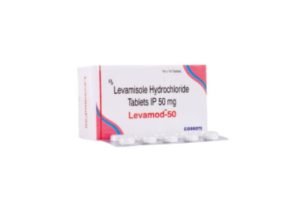
Here is a detailed overview of Cloxacillin:
Description:
Cloxacillin is a beta-lactam antibiotic in the penicillin class, specifically a penicillinase-resistant penicillin. It is effective against many Gram-positive bacteria, including Staphylococcus aureus strains that produce penicillinase (an enzyme that degrades other penicillins). It works by inhibiting bacterial cell wall synthesis, leading to cell lysis and death.
Brand Names:
- Tegopen
- Cloxapen
- Cloxacillin sodium (generic and often used as the non-proprietary name)
Available Forms & Strengths:
- Capsules/Tablets:
- 250 mg
- 500 mg
- Oral Suspension:
- 125 mg/5 mL
- 250 mg/5 mL
- Injection (IV/IM):
- Cloxacillin sodium: Typically available in vials containing 500 mg or 1 g.
Uses:
Cloxacillin is used to treat infections caused by penicillinase-producing Gram-positive bacteria, including:
- Skin and Soft Tissue Infections: Such as cellulitis, impetigo, and abscesses.
- Bone and Joint Infections: Including osteomyelitis.
- Respiratory Tract Infections: Such as pneumonia, especially when caused by penicillin-resistant Staphylococcus aureus.
- Endocarditis: Caused by susceptible strains of Staphylococcus.
- Urinary Tract Infections: Particularly those caused by Staphylococcus species.
Side Effects:
- Common:
- Gastrointestinal: Nausea, vomiting, diarrhea.
- Allergic Reactions: Rash, itching, urticaria.
- Less Common:
- Hematologic: Leukopenia, thrombocytopenia, or anemia.
- Renal: Risk of nephrotoxicity, particularly with high doses or pre-existing renal conditions.
- Liver: Elevated liver enzymes or liver dysfunction (rare).
- Superinfections: Risk of overgrowth of non-susceptible organisms such as Clostridium difficile.
Dose:
- Adults:
- Oral: Typically 250 mg to 500 mg every 6 hours.
- IV/IM: Typically 500 mg to 1 g every 4-6 hours.
- Children:
- Oral: Dosing is typically 25-50 mg/kg/day divided into 3-4 doses, depending on the severity of the infection.
- IV/IM: Based on body weight and infection severity, often 50-100 mg/kg/day divided into 4-6 doses.
Contraindications:
- Hypersensitivity: Known allergy to Cloxacillin, other penicillins, or beta-lactam antibiotics.
- Renal Impairment: Use with caution in patients with significant renal dysfunction due to the risk of drug accumulation and nephrotoxicity.
Drug Interactions:
- Anticoagulants: Cloxacillin may enhance the effects of anticoagulants like warfarin.
- Other Antibiotics: Cloxacillin may interact with other antibiotics; care should be taken to monitor for any synergistic or antagonistic effects.
- Methotrexate: Cloxacillin may affect renal clearance of methotrexate, increasing the risk of methotrexate toxicity.
Warnings:
- Allergic Reactions: Serious allergic reactions, including anaphylaxis, can occur. Discontinue immediately if severe allergic symptoms develop.
- Renal Monitoring: Regular monitoring of renal function is advised, especially in patients with pre-existing kidney issues.
- Superinfection Risk: Prolonged use can lead to overgrowth of resistant organisms or fungi.
Special Considerations:
- Pregnancy: Classified as Category B. Generally considered safe during pregnancy, but should be used when clearly needed.
- Breastfeeding: Cloxacillin is excreted in breast milk in small amounts. It is usually considered safe for use during breastfeeding, but monitoring for any adverse effects in the infant is recommended.
- Pediatric Use: Cloxacillin is used in children, with dosing adjusted based on weight and the severity of the infection.
Doctor Advised:
- Complete the full course of therapy as prescribed to ensure effectiveness and minimize the risk of resistance.
- Inform your healthcare provider of any history of allergic reactions to penicillins or other beta-lactam antibiotics.
- Monitor for side effects, such as gastrointestinal issues or signs of an allergic reaction, and seek medical advice if necessary.
Conclusion:
Cloxacillin is an effective antibiotic for treating infections caused by penicillinase-producing Gram-positive bacteria. It is particularly useful for skin infections, respiratory tract infections, and other conditions caused by resistant strains of Staphylococcus aureus. It should be used according to medical advice to prevent resistance and manage potential side effects.







